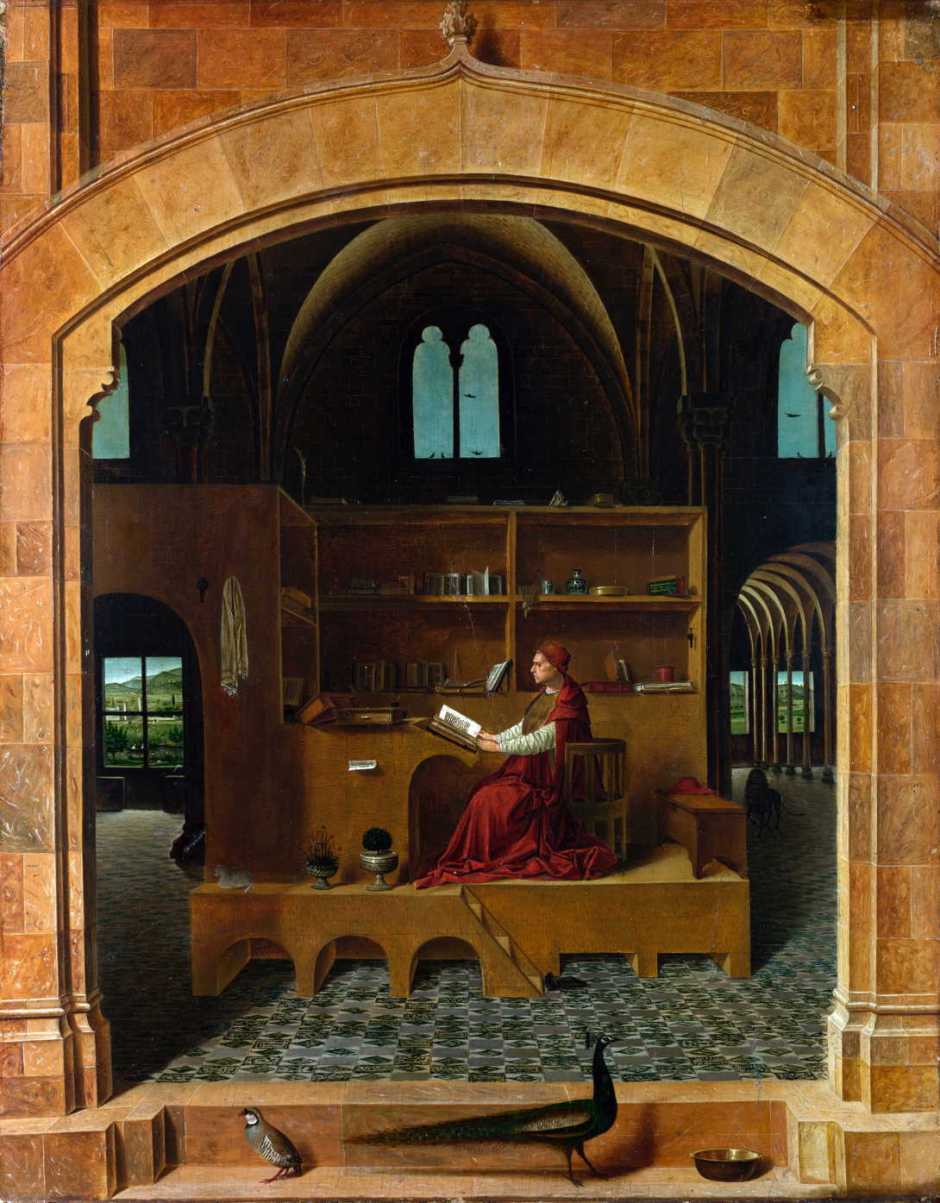Until the recent widespread use of digital manipulation of images, only painters had the ability to control all aspects of their two-dimensional projections of three-dimensional views. By enhancing the visual cues for depth, a painting can make a landscape look deeper; by reducing those cues it can look flat.
Among the most manipulable cues to depth in many landscape paintings are those known as aerial perspective: the way that distant hills fade in contrast, detail and colour, and how their hue shifts towards cooler colours. In this article and its companion tomorrow, I look at aerial perspective in landscape paintings, how it works, and how it has changed since the Renaissance, particularly after the invention of photography.
To illustrate its effects, I apologise for showing one of my own watercolours and a matching unenhanced digital image of the same view.

In my watercolour painted on the Downs a short walk from our house, there are four distinct levels of depth: the immediate grassy foreground, the more distant Down with its obelisk and cattle, a further band of hills deeper into the view, and land which is far distant on the horizon. There are distinct differences in tone, colour and detail between them.

Although the colours and aspect ratio of this photograph are different, those same zones are visible even when no paint has come between reality and the image you see. This was taken from the same point as the viewpoint of the painting.
Aerial perspective is thus made up from several related optical effects, including the following features with increasing distance, prominent when more than a kilometre from the observer:
- a reduction in the difference in lightness between an object and its background,
- resulting in a reduction in the range of lightness values, or contrast,
- resultant loss of detail in objects,
- reduction in chroma generally,
- a shift in hue, normally towards blue (‘cooler colours’).

These are shown clearly in the coloured and monochrome versions of this photograph, taken in the French Alps during fine but slightly hazy weather.

Before the Renaissance, landscapes weren’t painted in any mimetic manner, and there appears to have been no concern in trying to depict these optical effects. With increasing emphasis on realistic depiction, this soon changed.

Antonello, who was largely responsible for the introduction of oil painting to the southern Renaissance, shows his approach in the tiny landscape vignettes in his Saint Jerome in his Study from about 1475. The detail of one of those views is shown below, and demonstrates that the artist already understood the basics, although there’s little sign of any shift in hue.

Leonardo da Vinci took a particular interest in the developing science of optics, as a result of which his use of aerial perspective is far more convincing.

Madonna of the Carnation from about 1477-78 is perhaps the most complex and ambitious of Leonardo’s early works to have survived. In addition to its conventional figures, there is a floral display at the right edge, and a detailed landscape beyond the symmetry of the windows, with marked aerial perspective.

Giorgione’s Virgin and Child with Saint Nicasius and Saint Francis of Assisi (the ‘Castelfranco Altarpiece’) from about 1500 combines a fine depiction of the Virgin and infant Christ with two wonderful saintly figures – Nicasius’ armour is spectacular – and an innovative naturalist landscape. The buildings at the upper left are meticulously painted, and there is excellent aerial perspective at the upper right.
By the time that the early landscape masters including Nicolas Poussin were painting their idealised landscapes, aerial perspective was well understood and an expected feature.

This is clearest in Poussin’s late pure landscapes, including his sublime masterpiece Landscape with a Calm from about 1651.
In the next century, as new generations developed the use of watercolour for their landscapes, it proved particularly powerful for aerial perspective.

The precocious Thomas Girtin painted this fine view of Rochester, Kent: from the North when he was only about fifteen, in 1790. It’s a perfect demonstration of all the effects of aerial perspective, and how they can open up a landscape, giving it great depth.
Yet within a hundred years, artists were intentionally flattening views, as I’ll show in tomorrow’s article.

